- A Numerical Study on Two-dimensional Tidal Simulation in Tokuyama Bay
- A Numerical Study on the Rip Current in Niigata shore
- In-Situ Experiment of Melting-Snow Pipe System Pump Controlled by Inverter Using Snowfall Intensity
- The intrusion of the interflow into the various density profile environments
- Numerical Analysis of Vertical Thermals Using the Turbulence Model
- Modeling of Flowing Avalanches considering 3-Dimensional Topography and Development of Numerical Simulator
- Numerical Study of Production and Transportation of Sea Salt Spray

Summary of Master & Bechelor Theses 2004.3
[ English ] [ Japanese ]
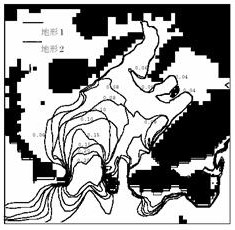 Kohei KIYOTA
Kohei KIYOTA
Tokuyama Bay is located at the inside of the Seto Inland Sea, Japan. The bathymetry of this domain has the characteristic of the small entry mouth, the large body and the flat bottom. However the tidal flow is prevalent around this domain, the tidal excursion is very small at the inside of this bay. Therefore, there is a heavy pollutant problem and it is very important to know the mechanisms of the tidal exchange to solve this problem. This study tried to know how the environmental condition include the water quality becomes to be good by changing the tidal exchange.
This study simulated the tidal flow and the tidal exchange by using the two-dimensional finite difference model, firstly, in the simplified geography, and secondary, in the Tokuyama Bay. These numerical experiments are made sure of the correctness by comparing with the hydraulic experiment and the observed data in the Tokuyama Bay.
These results show that the tidal exchange becomes to be big if the depth, around the entry of the bay, changes to be shallow. It means that there is a possibility of the environmental condition inside of the bay to be good.
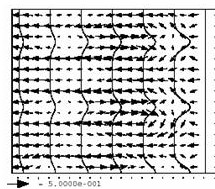 Tsuyoshi@TAKEBAYASHI
Tsuyoshi@TAKEBAYASHI
The beach, not only in the Pacific Ocean but also in the Japan Sea, becomes to be leisure area in the summer. But the accident, the swimmer is carried away to the offshore, is sometimes happened. There are some reasons why the accident is happened. One of the reasons is that there is the especial current, called as the rip current.
Rip currents, commonly called rip tides, and erroneously called undertows, affect many of the surf areas along the coast, and pose a life threatening situation to the unsuspecting beach goers. Rip currents are strong surface current of water flowing out past the surf zone that can pull the strongest swimmer, like as an Olympic swimmer, into deeper water. Most deaths occur when people caught in the current try to swim toward the shore directly against the current; they become totally exhausted and drown. Rip currents occur around the world at "surf" beaches, including the Pacific coasts, and the Japan Sea.
Therefore, the mechanism of the rip current has to be known to expect its occurrence, and to prevent the accident. This study simulated the rip current by using the two-dimensional finite difference model, based on the Boussinesq equation, firstly in a simplified geography, and secondary, in the modeled bathymetry, Shellfs law, easily to occur the rip currents.
The results show that the rip current occur at near the beach, the stream is narrow (10-30 meters wide) with the length extending up to 200-300 meters offshore, and the water velocity of the offshore direction becomes to be about 1.0m/s.
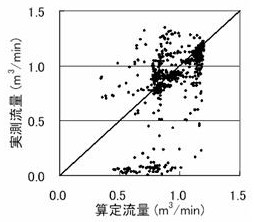 Takeshi Hachinohe
Takeshi Hachinohe
As a traditional snow-melting pipe system on the load sprinkles underground water from holes of the pipe laid underground. These systems cause serious problems those are the sinking of the ground surface and the lack of ground water spring. The new pipe system avoids the occurrence of these problems and will make it possible to construct the snow pipe sprinkler network for the wider area. An inverter-controlled new system is developed under collaboration of Nagaoka University of Technology, Nagaoka City and private companies. In the system, the pump is controlled by a snow intensity meter. In order to investigate the efficiency of the new system, several measuring instruments are set in the system such as the discharge meter, the snow intensity meter, the temperature meter and three sets of the digital camera. All the measured data are sent by the use of the Internet through ADSL. All data except for the image data are sampled at one-minute interval. The image data are sampled at ten minutes interval. In this research, the validity of a new melting-snow pipe system is examined based on these in-situ experimental results.
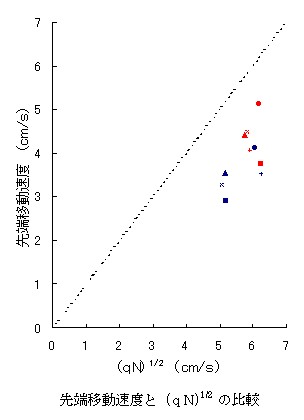 Keiji Murata
Keiji Murata
An experimental study is carried out on the density interflow which flows into a place where the density exists. The density interflow is generated by the density differences between the upper, lower and intrusion water. An example of the interflow is the motion of a turbid interflow into the stratified reservoir where the density of the lower layer is larger than that of the inflow water.
In this study, the flow characteristics of the intrusion phenomena are investigated. The densities of the ambient water and the inflow water are changed in the experiments.The results of experiments show that the travel speed of the front is small and the maximum thickness of the interflow water is large when the relative density difference between the inflow water and the upper water is small.
The front of the interflow intrudes to form a wedge when the density of the ambient water smoothly changes. The front of the interflow forms a typical shape when the density of the ambient water changes discontinuously. The travel speed obtained from the experiments is compared with that expressed in the equations of Manins and Kao. The experimental results of the travel speed are larger than the theoretical ones.The reason for this result is that the following factors are neglected in the theoretical treatment, i.e. the drag force of the front which acts on the inflow water, the frictional resistance at the interfaces, the mixing of the ambient water, and the inverse flow.Taking these factors into consideration, the theory explains the experimental results well.
 Kentaro YAGI
Kentaro YAGI
Vertical thermals are related to prevention of the sea pollution and the diffusion of the wastewater. Thus, the study of the flow mechanism of vertical thermals is important to predict and prevent the environmental pollution. The numerical analysis of saline thermals was carried out using the k-Ã turbulent model. The basic equations are discretized by the implicit method and the pressure equation is solved by the SIMPLE method. The numerical results are compared with the experiment of vertical gravity currents carried out by Fukushima and Tanaka (2001). The cases of the concentration of saline thermals of 1, 3 and 5% were analyzed. The travel speed of the saline thermals was compared with the experimental results. The analytical values decreased quickly at first as shown the experimental results. The numerical solutions of the width of the saline thermals are compared with the experimental results. At the salinity concentration of 3% and 5%, the width increased linearly which were coincided with the experimental results. In the case of the salinity concentration of 1%, both numerical and experimental results changes non-linearly. Thus the numerical analysis using the k-Ã turbulence model can express the behavior of the vertical thermals well.
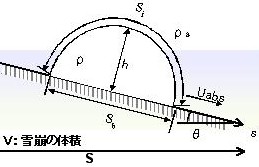 Kunihiro Yamada
Kunihiro Yamada
An avalanche is classified into two kinds according to movement and form. A flowing avalanche is an avalanche which moves so that it may flow without snow flurries and occurs at the beginning of Spring. On the other hand, a powder snow avalanche generates many snow flurries; this type of avalanche is especially common as a result of the severe winter weather.A large part of Japan is mountainous. Many villages and large structures have the potential of damage by both flowing avalanche and powder snow avalanches. In order to prevent these disasters, an understanding of both the flow avalanches and the powder snow avalanches are necessary. A hazard map can be based on such knowledge. Also, it should be possible to build facilities preventing these calamities. In this research, the numerical simulator on flowing avalanche is developed by means of input data concerning the 3-D topographical features of the avalanche. Once this is done, the result will be compared with Osawafs (2003) analysis of a powder snow avalanche and the actuality of an avalanche itself.
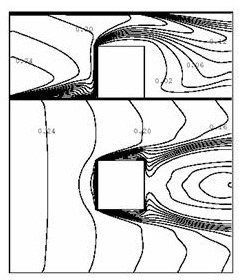 Fuminori YAMADA
Fuminori YAMADA
The Sea salt spray is the small particle of seawater, splashed up by wind and wave action. Transportation of salt spray is also affected by wind, geographical condition and configuration of coastal structures.
In this study, integrated numerical code which covers 1) wave propagation with wave breaking, 2) generation of sea salt spray flux in the surface, 3) advection-diffusion of sea salt spray, is developed. Field observation at Osaki-Coast in Ishiji town, Niigata Pref. is also carried out to compare the numerical results.
It is shown that the amount of the spray generated on the sea surface is related to both wind and wave action. The amount of sea salt spray production and transportation can be estimated by the numerical model. The salt spray production around coastal structures and shoreline are shown clearly. It becomes clear that characteristics of the coastal structure and geographical condition reflect the transport of the sea salt spray. Reduction of the total amount of salt spray is discussed by the field investigation and numerical simulation.
| Copyright, |
Hydraulic Engineering Laboratory Department of Environmental and Civil Engineering NAGAOKA University of Technology |
